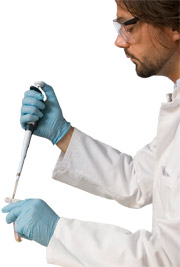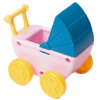What are oocytes?
- What is oocyte retrieval or pick up?
- History of oocyte pick up
- Effectiveness of oocyte retrieval
- How and when is oocyte retrieval performed?
- Preparing for oocyte retrieval
- What to expect after oocyte retrieval
- Benefits of oocyte retrieval
- Limitations of oocyte retrieval
What are oocytes?
Oocytes (also known as ovum or simply as eggs) are female gametes – the female cells which have the potential to conceive another human being if fertilised by a male gamete (i.e. sperm, known scientifically as spermatozoon).
Each woman is born with a finite number of oocytes in her ovaries. She does not produce any more eggs throughout her life. The eggs are released periodically during the woman’s reproductive years, through the natural process of ovulation. Each time a woman ovulates (i.e. has a menstrual cycle), a single egg is released from the ovaries, once it has matured to the point that it is ready for fertilisation. It will then enter the fallopian tubes, where, if it comes into contact with sperm, it may be fertilised and form a pregnancy. If the egg is not fertilised, it will continue through the fallopian tubes and leave the body via the vagina.
What is oocyte retrieval or pick up?
Oocyte pick up is the process of collecting mature eggs, directly from a woman’s ovaries, prior to their release from ovarian follicles. It can be performed either to collect a single egg released as part of a woman’s natural menstrual cycle, or, most often, in conjunction with hyperovulation to enable the simultaneous retrieval of numerous mature oocytes.
History of oocyte pick up

Similarly, advances in related ART procedures have also greatly enhanced the efficiency of oocyte retrieval. The key milestones in the development of oocyte retrieval techniques are further discussed below.
Advances in ovarian stimulation
The development of methods to artificially induce ovulation and hyperovulation and predict oocyte maturation greatly increased the efficiency of oocyte retrieval. Inducing hyperovulation now enables the simultaneous collection of numerous mature oocytes (8-12) per cycle, each of which has the potential to be fertilised and implanted. It also enables clinicians to predict the time of optimum oocyte maturity and thus enables clinicians to retrieve only oocytes that are properly matured. As matured oocytes are more likely to become fertilised in vitro than immature oocytes, this increases fertilisation rates.
Advances in laparoscopic oocyte pick up
Laparoscopic oocyte retrieval had a success rate of less than 50% per follicle in the early days of IVF. The introduction of new instruments to assist in laparoscopic oocyte retrieval in the early 1980s increased success to 60-80% per follicle. These instruments included a foot controlled device to control the pressure used to aspirate ovarian follicles and remove oocytes (i.e. suck oocytes out of the follicles), and bevel point, Teflon lined needles used to collect oocytes.
Development of ultrasound guided retrieval techniques
Advances in the development of ultrasound technology which occurred throughout the 1970s and 1980s improved the practice of oocyte retrieval. Ultrasound was used, and continues to be used today, to view the ovaries and assess follicular development in order to plan the timing of oocyte retrieval to coincide with maturation. Ultrasonically guided oocyte pick up also quickly replaced laparoscopically assisted oocyte pickup.
In vitro maturation of oocytes before insemination
In 1981 Australian scientists, upon recognising the importance of egg maturity for fertilisation success, began leaving retrieved oocytes in culture media to further mature for several hours following retrieval. This delay greatly improved fertilisation rates and remains common practice today.
Effectiveness of oocyte retrieval
On average, 8-12 mature eggs will be collected per hyperstimulation cycle. It is rare that no mature eggs are collected following hyperstimulation, however both the quality and quantity of oocytes retrieved decrease as the age of the woman being treated increases.
How and when is oocyte retrieval performed?
All women who undergo this procedure will be administered human chorionic gonadotrophin (hCG) 36 hours prior to the procedure. hCG administration is the final stage of ovarian stimulation and the hormone stimulates the ovaries to mature oocytes in preparation for release. Its administration allows practitioners to schedule oocyte retrieval to coincide with maturation (i.e. 36 hours following hCG administration) and hospital working hours (i.e. there is no longer a need to retrieve oocytes on weekends or at nights). Women will generally be provided with hCG injections which they can administer at home, at a time specified by practitioners at their IVF clinic. Women then only need to enter a clinic on the day of collection and not for injection administration.
When attending the clinic for oocyte retrieval, the patient will be anaesthetised with a local anaesthetic. A transvaginal ultrasound will be conducted to assess ovarian follicular development and the number and position of ovarian follicles for aspiration will be recorded. A needle guide and appropriately sized needle are then attached to the vaginal ultrasound probe and inserted carefully into the vagina. At this stage the needle tip will be withdrawn into the probe so that is does not get contaminated. The needle will then be lined up with the most accessible follicle and the needle tip extended and carefully inserted into the follicle. The fluid contained in the follicle is then sucked into a syringe. The process will be repeated until all accessible follicles in the ovary have been aspirated. The needle will then be removed and flushed for blockages prior to insertion into the second ovary.
Retrieved ovarian follicular fluid is then transferred immediately to a laboratory, where it is examined under a microscope to identify oocytes contained in the fluid. All oocytes are retrieved from the fluid and placed in a growth medium for several hours, to complete the maturation process ready for insemination in vitro.
Preparing for oocyte retrieval

Ova are collected by inserting a fine needle through the woman’s vagina into the ovaries, using ultrasound guidance. Women undergoing this procedure may experience some pain and discomfort despite the anaesthetic and should expect a similar level of discomfort to that experienced during a pap smear.
What to expect after oocyte retrieval
The main side effects of this procedure relate to the anaesthetic which is administered to alleviate pain. Women will usually spend a couple of hours recovering from the effects of anaesthesia in the recovery room. After that, they are able to go straight home, however should avoid driving for at least 24 hours following the anaesthetic. Women may also experience abdominal cramps and minor vaginal bleeding following the procedure.
Benefits of oocyte retrieval
The collection of mature oocytes is a prerequisite for IVF and other ART procedures, and thus, oocyte retrieval enables couples experiencing infertility to undergo ART and conceive.
Limitations of oocyte retrieval
Oocyte retrieval is an efficient technique for collecting oocytes, however it cannot improve the quality of oocytes in a woman’s ovaries. Women whose ovarian reserve has diminished as a result of age, environmental or other factors, may have only a limited number or no viable oocytes in their ovaries, and oocyte retrieval is not an effective treatment in these cases.
More information
 |
For more information on infertility, including investigations and treatments, as well as some useful animations, see Infertility. |
 |
For more information on alternative treatments, see Infertility Treatments / Assisted Reproductive Technologies (ARTs). |
References
- Royal College of Nursing Fertility Nurses Group. Performing ultrasound-guided oocyte retrieval: RCN guidance for fertility nurses. London: Royal College of Nurses; 2004 [cited 30 November 2008]. Available from URL: http://www.rcn.org.uk/__data/assets/pdf_file/0004/78619/002425.pdf
- Taymor ML, Ranoux CJ, Gross GL. Natural oocyte retrieval with intravaginal fertilization: a simplified approach to in vitro fertilization. Obstet Gynecol. 1992;80(5):888-91.
- Macklon NS, Stouffer RL, Giudice LC, Fauser BC. The science behind 25 years of ovarian stimulation for in vitro fertilization. Endocr Rev. 2006;27(2):170-207.
- Cohen J, Trounson A, Dawson K, Jones H, Hazekamp J, Nygren KG, et al. The early days of IVF outside the UK. Hum Reprod Update. 2005;11(5):439-59.
- Balen AH, Rutherford AJ. Management of infertility. BMJ. 2007;335(7620):608-11.
- Monash IVF. A treatment cycle for women [online]. Sydney: Monash IVF Australia; 2008 [cited 31 March 2010]. Available from URL: http://www.monashivf.com/default.asp?action=article&ID=21657
All content and media on the HealthEngine Blog is created and published online for informational purposes only. It is not intended to be a substitute for professional medical advice and should not be relied on as health or personal advice. Always seek the guidance of your doctor or other qualified health professional with any questions you may have regarding your health or a medical condition. Never disregard the advice of a medical professional, or delay in seeking it because of something you have read on this Website. If you think you may have a medical emergency, call your doctor, go to the nearest hospital emergency department, or call the emergency services immediately.








